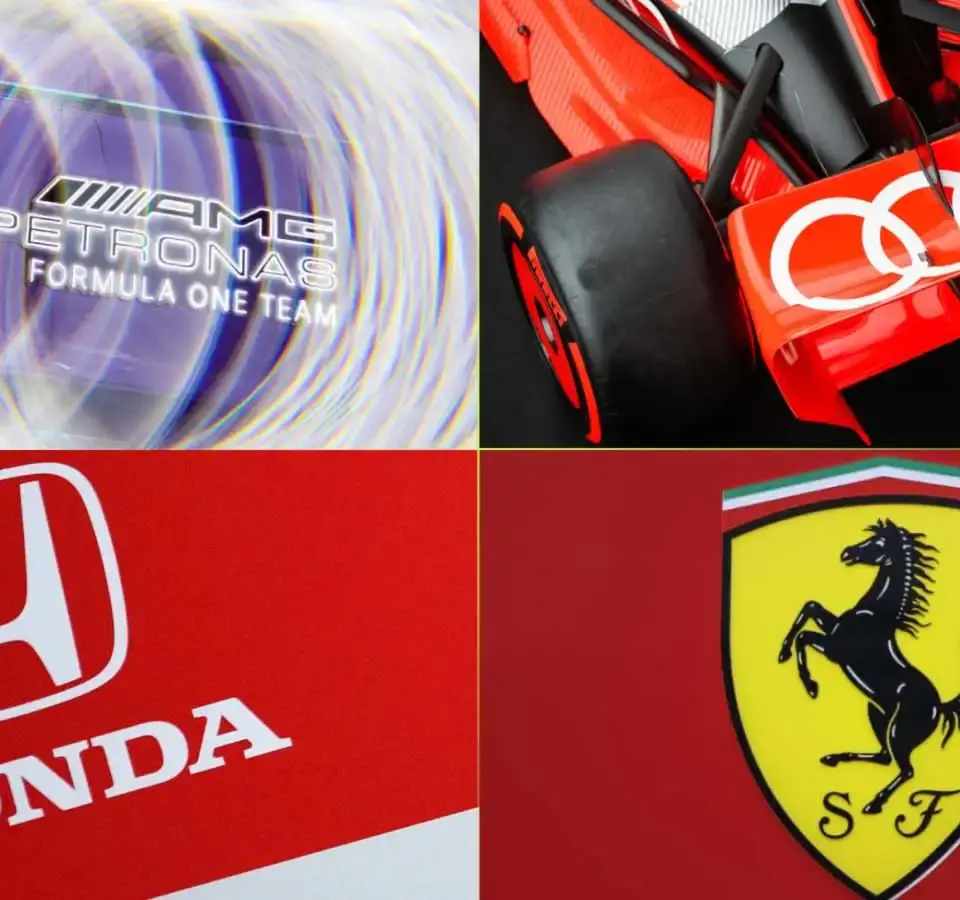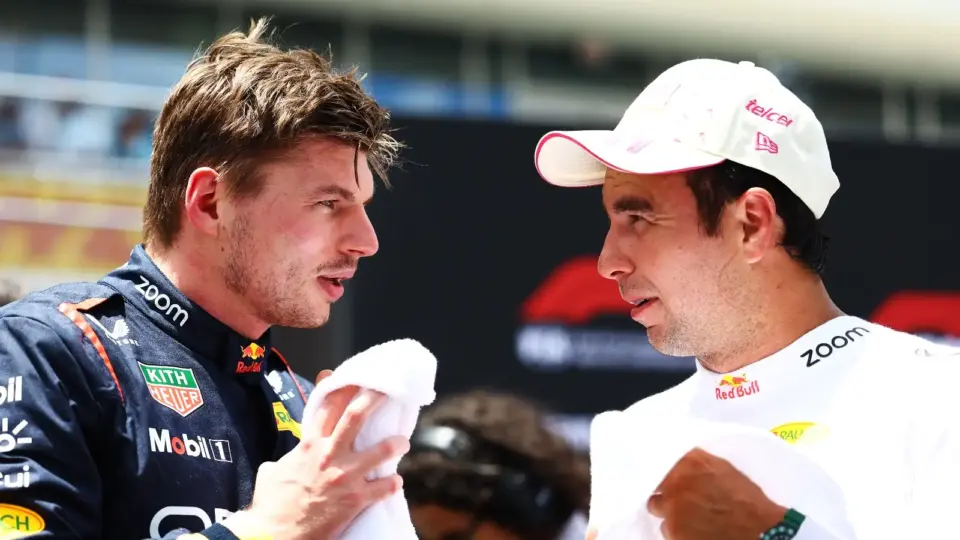The world of Formula 1 is on the brink of monumental change as the 2026 season approaches. A host of new teams and power unit suppliers are set to join the grid, drastically altering the landscape of the sport. These changes are not just technical; they bring fresh excitement and rivalries. To help fans navigate this evolving journey, let’s explore the confirmed teams and the engines that will power them come 2026.
This season promises to be particularly thrilling, with more factory teams than ever, each vying for dominance. Well-established names are pushing the boundaries of innovation, while new entrants aim to make their mark. The shift towards battery power and sustainable fuels signifies a new chapter for Formula 1, blending tradition with cutting-edge technology. Here’s a closer look at who will be powering whom in this groundbreaking season.
Red Bull Ford Powertrains
Red Bull Ford Powertrains is stepping into a new era for the F1 2026 season. After using Honda’s intellectual property from 2022 to 2025, they will develop their first engine from scratch. This ambitious project is further boosted by the involvement of Ford. The automotive giant joined the initiative as a technical partner in 2023. Jim Farley, Ford’s President and CEO, emphasized the alignments of their goals with F1’s new regulations: “Ford’s return to Formula 1 with Red Bull Racing is all about where we are going as a company– increasingly electric, software-defined, modern vehicles and experiences.”
The collaboration with Ford marks a significant milestone, as it has been more than two decades since Ford last participated in Formula 1. The new power unit will feature a greater focus on battery power, switching to fully sustainable fuels. Red Bull’s engineering team has already begun work at their Milton Keynes facility, ensuring that their debut in engine manufacturing stays on track, aiming for both performance and sustainability.
Mercedes
Mercedes continues to be a powerhouse on the F1 grid. Based in Brixworth, UK, their High Performance Powertrains (HPP) division has been crafting engines since 1994, following their takeover of Ilmor. The team re-entered Formula 1 in 2010, and since then, their power units have become a force to be reckoned with. During the turbo-hybrid era, Mercedes engines were known for their speed and reliability, powering 40% of the grid at one point. This stronghold is set to continue with the 2026 regulation changes.
Mercedes has consistently performed well, leveraging their vast resources and technical expertise. The 2026 season will see them continue to supply their own team, in addition to customer teams like McLaren, Williams, and possibly others. The expectation is that Mercedes will maintain their reputation for delivering high-performance engines that combine power and efficiency.
Ferrari
Ferrari, the oldest and most storied team in Formula 1, will also continue to build its own engines for the 2026 season. Throughout the team’s history, Ferrari power units have experienced varying degrees of success. However, they remain a symbol of prestige and technical prowess in the sport.
The team has often supported customer outfits, providing engines to other teams. The 2026 regulations bring a fresh challenge, but Ferrari’s commitment to innovation and performance remains unwavering. The focus will be on adapting to the new sustainability goals while maintaining their competitive edge on the track.
Honda and Aston Martin
Honda is making a comeback in 2026 after stepping away from Formula 1 at the end of 2021. Their return aligns with the new power unit regulations, which present a chance for redemption after their initial struggles with McLaren in the mid-2010s. Eventually, Honda found success with Red Bull, securing several championships.
From the 2026 season, Honda will have an exclusive factory power unit deal with Aston Martin. This partnership represents a significant shift, aiming to leverage Honda’s engineering expertise and Aston Martin’s ambitions. The collaboration is highly anticipated, with both parties aiming for competitive success.
Audi
Audi is gearing up for its debut in Formula 1, slated for the 2026 season. The brand’s entry comes through a majority takeover of the Sauber team, finalized in October 2022. This move is part of a full takeover strategy, set to complete by 2026, bringing a Volkswagen-owned brand to the grid.
Audi’s participation marks a significant new chapter in F1, symbolizing the convergence of traditional automotive giants and the modern Formula 1 landscape. With Nico Hulkenberg already signed to drive for them, Audi is making early moves to establish a strong team. Their entry is set to shake up the competition, as they bring their engineering prowess into the mix.
Preparation for Audi’s entry includes building a robust technical team and establishing a competitive car design. The impact of their arrival will be watched closely, as they aim to make a mark from the outset. The 2026 regulations offer Audi a unique opportunity to innovate and challenge established teams.
Renault’s Uncertain Future
Renault’s position for 2026 remains uncertain. The team was rebranded as Alpine in 2021 and has been operating independently in terms of power units. Historically, Renault has supplied engines to various teams, but their recent struggles in the V6 hybrid era have cast doubts on their future plans.
Speculation is rife that Alpine might seek an alternative power unit supplier for 2026. Mercedes is a potential candidate, given their previous partnership with the then Lotus team in 2015. The decision will significantly impact Alpine’s competitiveness under the new regulations.
General Motors and Cadillac
General Motors, under its Cadillac brand, aims to join the F1 grid through a partnership with Andretti Global. Although they received FIA approval in 2023, their bid faced hurdles with Formula One Management (FOM), which initially rejected their entry.
Despite the setback, Andretti-Cadillac is pushing forward, establishing a base at Silverstone in April 2024. Their goal is to join the grid with a fully American team. The project showcases GM’s commitment to motorsports and the ambition to expand their presence in Formula 1.
The entry of Cadillac would add a new dimension to the competition, highlighting the global appeal of Formula 1. Their continuous efforts suggest that the dream of an American team in F1 is far from over. The team’s progress will be closely monitored as they strive for inclusion in future seasons.
Teams and Their Power Units in 2026
Here’s a brief look at which teams will be powered by which suppliers in 2026: Red Bull and RB will use Red Bull Ford Powertrains. Mercedes will use Mercedes engines. Ferrari will use Ferrari engines. McLaren will use Mercedes engines. Aston Martin will use Honda engines. Alpine’s supplier is still to be confirmed.
Audi will use their own engines, and Haas will use Ferrari engines. Williams will continue to use Mercedes engines. Each of these partnerships will bring its own strategic advantages and challenges as teams adapt to the new regulations.
The F1 2026 season is poised to be a thrilling chapter in the history of motorsport. With a mix of established powerhouses and ambitious new entrants, the grid will be more competitive than ever. The shift towards sustainable fuels and battery power not only reflects the sport’s commitment to innovation but also sets the stage for unprecedented technological advancements.
As each team prepares to tackle the challenges posed by the new regulations, fans can look forward to an exciting blend of seasoned expertise and fresh talent. The partnerships formed for 2026 will play a crucial role in determining the success of each team. Keeping an eye on these developments will be essential for understanding how the season unfolds.
Overall, the 2026 regulation changes promise to usher in a new era of competition and excitement in Formula 1. The anticipation surrounding the new power units and team dynamics underscores the transformative impact these changes will have on the sport. Buckle up for what promises to be an extraordinary season.
Source: Planetf1










